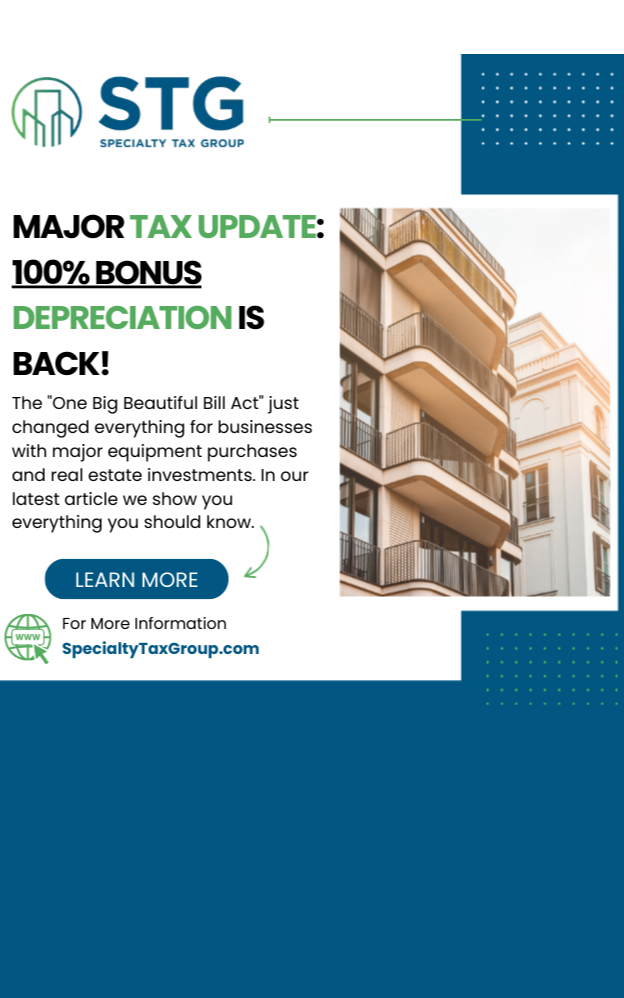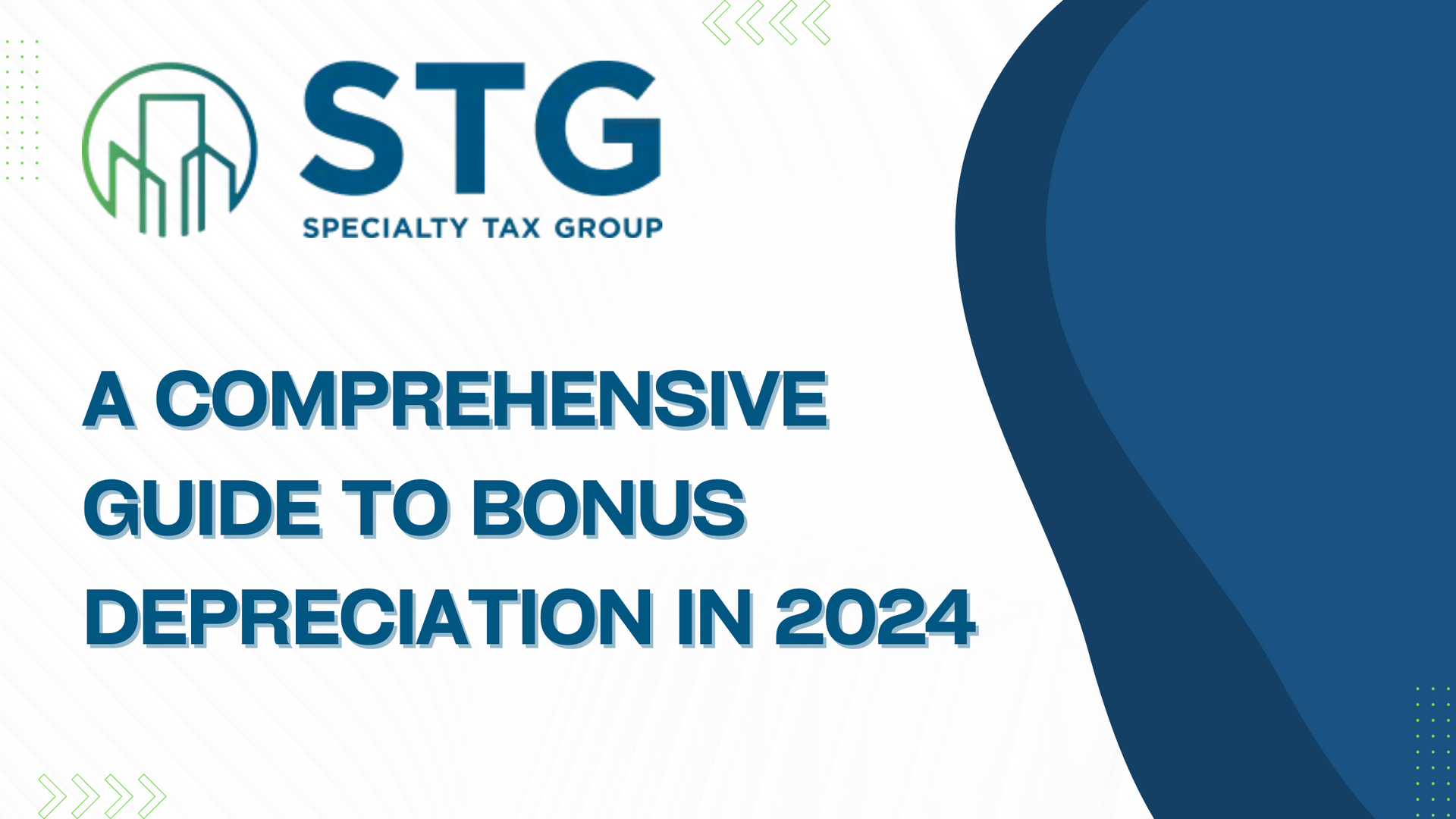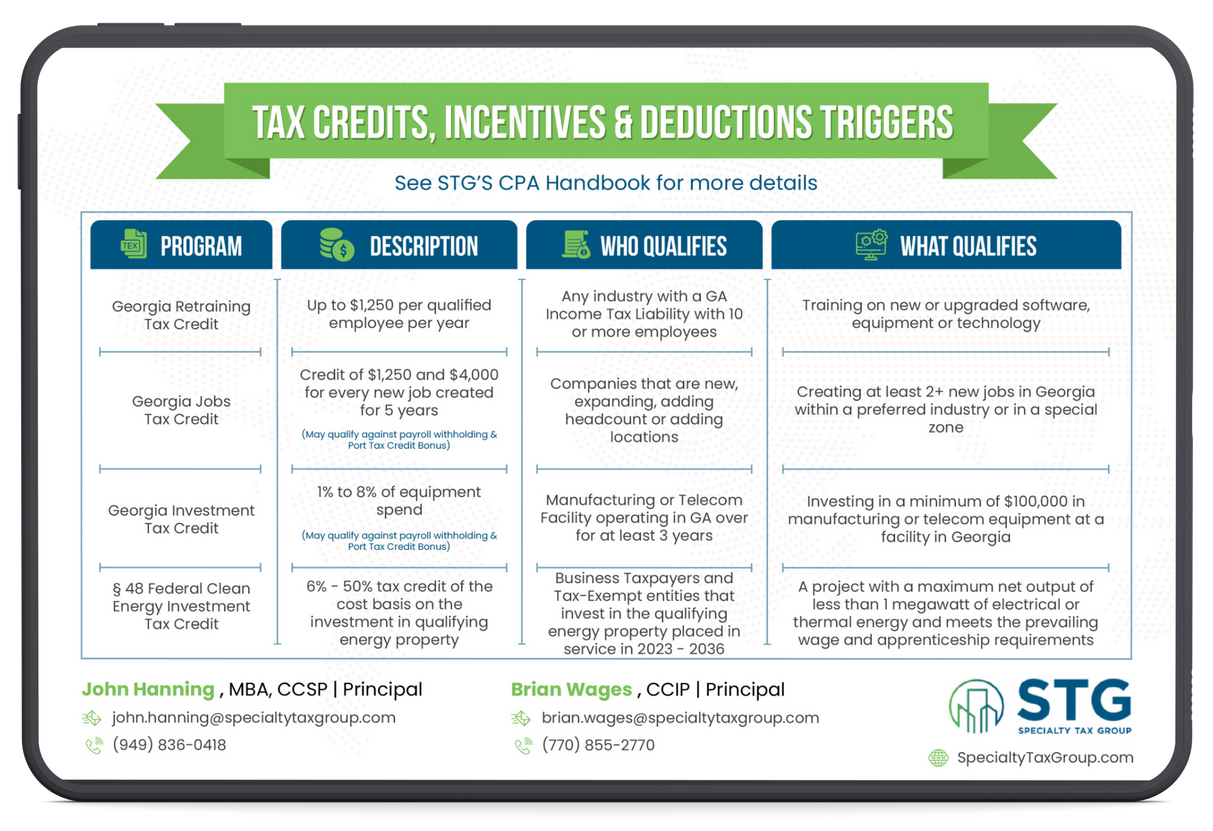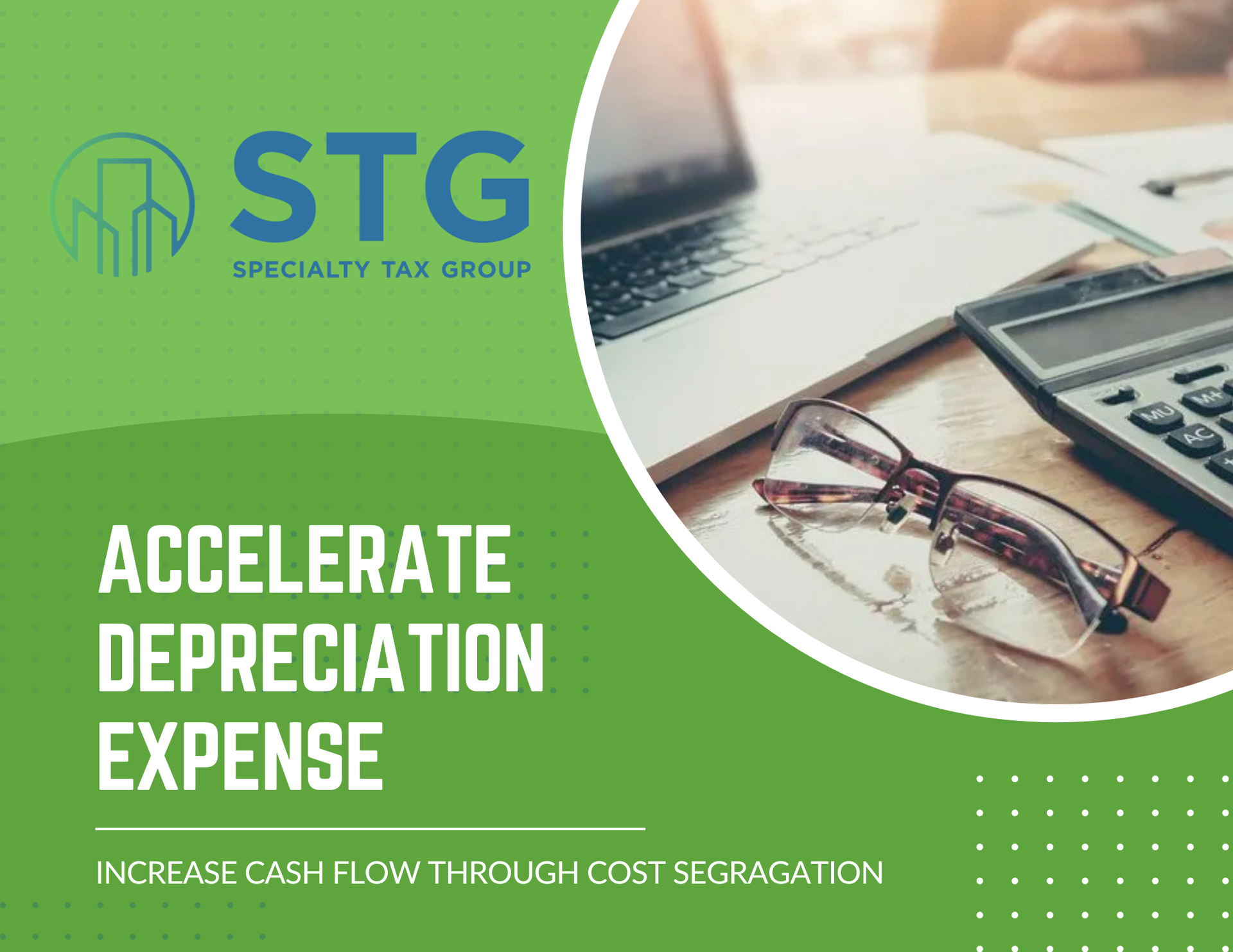This blog post has been researched, edited, and approved by John Hanning and Brian Wages. Join our newsletter below.
Maximizing Your Tax Savings: A Comprehensive Guide to Bonus Depreciation in 2024
For real estate investors, whether full-time professionals or part-time enthusiasts, leveraging bonus depreciation is a crucial strategy for maximizing tax savings. This guide offers a detailed look into the mechanics and strategic application of bonus depreciation in 2024, particularly focusing on new developments and how businesses can best leverage these opportunities for optimal financial benefit.
Understanding Bonus Depreciation
Bonus depreciation is a tax incentive that allows businesses to immediately deduct a significant portion of the purchase price of eligible assets. It's designed to encourage investment in new or used business equipment and improvements.
Key Developments in 2024:
- The rate of bonus depreciation continues to phase down, with eligible assets acquired and placed in service in 2024 eligible for 60% bonus depreciation before it decreases further in subsequent years.
- It applies to various asset types, including Qualified Improvement Property (QIP), Qualified Leasehold Improvements (QLI), and more.
Eligible Property Types
Understanding which improvements and properties qualify for bonus depreciation can significantly impact tax planning strategies.
Qualified Improvement Property (QIP):
- Period: 2018 onward
- Eligibility: Interior improvements to commercial buildings, excluding enlargements, elevators, escalators, or internal structural framework.
- Recovery Period: 15 years under the Straight Line method.
- Code Section: 168(e)(6)
Qualified Leasehold Improvements (QLI):
- Period: 2001 - 2017
- Eligibility: Improvements made under or pursuant to a lease by tenants or landlords to the interior part of a non-residential building.
- Recovery Period: Generally 15 years.
- Code Section: 168(e)(6)
Qualified Restaurant Property:
- Period: Specifically advantageous for properties placed in service from 2004 to 2008, where more than 50% of the building's square footage is devoted to dining and food preparation.
- Recovery Period: 15 years.
- Code Section: 168(e)(7)
Strategy for Maximizing Depreciation Deductions
Review Depreciation Schedules:
Regularly updating and reviewing depreciation schedules ensures that all eligible assets are properly accounted for under the current tax law.
Prioritize Asset Acquisitions:
Plan for asset purchases to align with bonus depreciation eligibility, particularly focusing on the higher rate periods. For 2024, aim to place assets into service before the rate drops further in 2025.
Combine with Section 179:
Utilize both bonus depreciation and Section 179 expensing to maximize tax savings. While Section 179 provides an upfront deduction up to a certain limit, bonus depreciation allows for the immediate write-off of 60% of the remaining cost in 2024.
Case Studies and Practical Applications
Scenario 1: Large-Scale Manufacturing Equipment
- A manufacturing company purchases new equipment in 2024.
- Eligible for 60% bonus depreciation, reducing taxable income substantially in the year of purchase.
Scenario 2: Commercial Real Estate Improvements
- A commercial property owner renovates interior spaces of a building.
- The improvements qualify as QIP and are eligible for both bonus depreciation and potentially Section 179, depending on the specifics of the improvement and the business’s overall expense strategy.
Compliance and Planning Considerations
- Documentation: Maintain thorough records of all asset purchases and improvements, noting the dates of service and specific details to substantiate depreciation claims.
- Future Planning: Anticipate further reductions in bonus depreciation rates and plan capital expenditures accordingly. For instance, assets placed in service in 2025 will only be eligible for 40% bonus depreciation.
Conclusion
With thoughtful planning and strategic acquisition of property, businesses can leverage bonus depreciation to significantly enhance their tax savings in 2024. By staying informed of the evolving tax regulations and understanding how they apply to specific assets and improvements, companies can make informed decisions that align with their long-term financial objectives.
Contact us here if you need any help with your bonus depreciation tax savings.
Get a Personalized Bonus Depreciation Strategy
2024 Tax Guide






